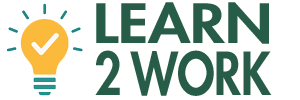A gap year doesn’t have to be a break from growth. In fact, the best gap year ideas for students strengthen your resume and prepare you for long-term success.
Whether you spend the year volunteering, interning, traveling, or building new skills, the key is choosing opportunities that show initiative and career readiness.
Here’s how to turn your year off into a year forward.
Volunteer Work
One of the most popular gap year activities is volunteering. From tutoring kids to helping with conservation projects, service work demonstrates leadership, adaptability, and empathy. Employers see these experiences as proof of character and teamwork.
For students interested in volunteering abroad, programs with nonprofit partners often include cultural immersion and language practice. Not only does this expand your worldview, but it also strengthens your problem-solving skills.
Document your impact. Whether you organized community drives or trained new volunteers, these accomplishments can be framed as measurable outcomes on a resume.
Internships and Apprenticeships
Hands-on work experience is one of the most powerful ways to shape a resume-boosting gap year. Internships during a gap year can provide exposure to industries you’re curious about and help you test different career paths before committing.
If you want to earn while you learn, consider apprenticeships. Many industries are bringing them back as a practical way to gain technical knowledge. See why in Why Apprenticeships Are Making a Comeback.
When choosing an internship, focus on roles that align with your goals. Even entry-level support tasks can develop transferable skills in communication, organization, and critical thinking.
Travel With Purpose
Travel can be a meaningful gap year experience when paired with structure. Programs that combine travel and cultural immersion with service or study are highly valued. Employers see cultural competence as a sign of flexibility and maturity.
For example, teaching English abroad or participating in a cultural exchange program shows independence while sharpening your ability to adapt. Travel paired with intentional learning or service is far more impactful than a tourist-style year off.
To keep your career momentum, reflect on what you learn. Journals, blogs, or even short videos can turn your travel experiences into stories you’ll later share in interviews.
Skill-Building Programs
Gap years are also an excellent time to invest in skill-building programs. Short-term bootcamps in areas like coding, digital marketing, or design can give you a competitive edge.
Students interested in healthcare or skilled trades can also explore certifications. These short, focused trainings not only add value to your resume but can also lead to part-time work while finishing college.
Remember, a year spent gaining certifications or building a portfolio is never wasted. It’s a launchpad for future opportunities.
Personal Projects That Showcase Initiative
Not every resume win requires a formal program. Some of the best gap year opportunities are self-directed. Starting a blog, launching a small business, or creating a community project demonstrates initiative.
These projects build both hard and soft skills—project management, budgeting, communication, and creativity. For example, students who organized local events or started small ventures often stand out during interviews because they show ownership and vision.
Need more guidance on making experiences shine? Check out our guide on How to Build a Resume Without Job Experience.
How to Frame Your Gap Year on a Resume
A common mistake students make is simply writing “gap year” on a resume without context. Employers want to see results and clarity. Instead of listing it as time off, highlight what you did and the outcomes achieved. For example:
- Intern, XYZ Nonprofit – Coordinated fundraising campaigns, raising $5,000.
- Volunteer Teacher, Global English Program – Designed lesson plans for 30 students weekly.
- Founder, Local Eco Project – Built a recycling program adopted by three schools.
By presenting roles and achievements, you show your gap year as intentional growth, not an employment gap.
Turning a Gap Year Into Career Growth
Your gap year is what you make of it. By focusing on the right gap year ideas for students, whether it’s volunteering or travelling with purpose, you create a resume that speaks to employers.
Every experience adds value when tied to personal growth and career readiness. The key is being intentional and documenting your impact. With the right approach, your gap year becomes a year that moves you forward.




